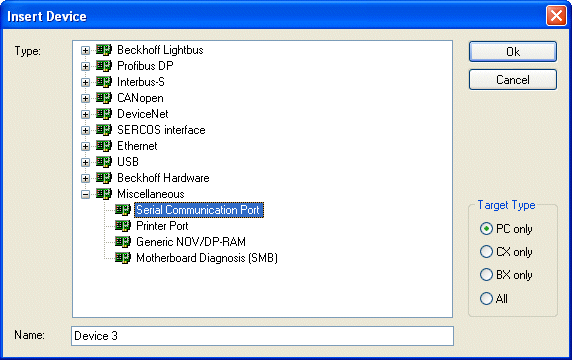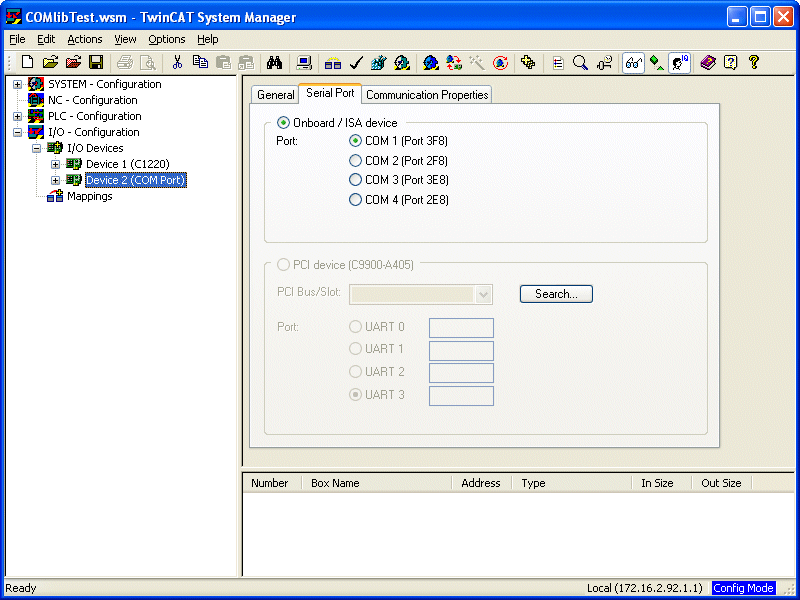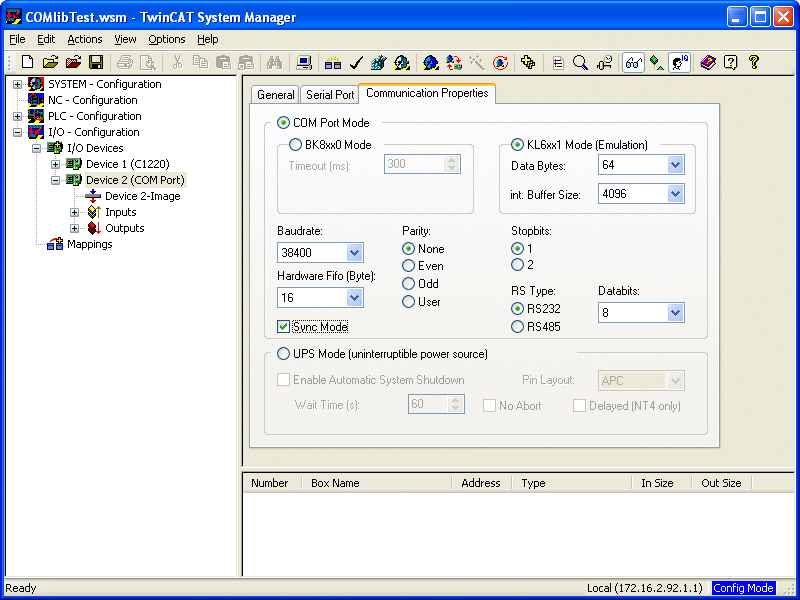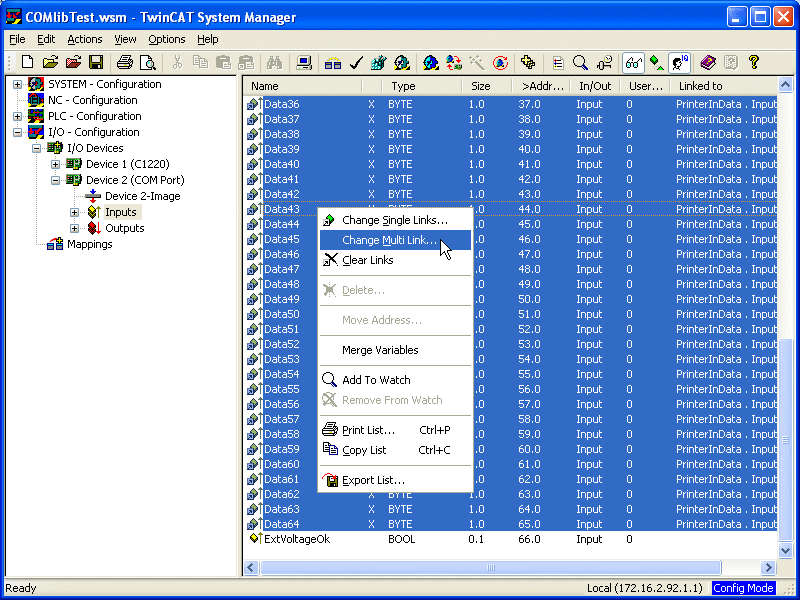Serial PC Interface
The PC’s standard serial interface is entered into the I/O configuration as a new I/O device.

After this the interface is configured:


COMlib only supports KL6xx1 emulation operation. Data bytes must be set to 64 bytes. The interface parameters are set appropriately in the application.
Sync mode: In Sync mode, communication with the interface hardware is synchronised with the communication task. This setting usually offers benefits at high baud rates, as long the cycle time of the communication task is short enough. At 115 kBaud, for example, 12 characters are received each millisecond. The interface therefore has to be operated with a maximum cycle time of 1 ms, in order to avoid overflow of the 16-byte hardware FIFO. If the cycle times are too long, there is a risk of buffer overflow.
If Sync mode is switched off, the interface is served via the Windows timer interrupt every millisecond, irrespective of the task cycle time. This mode is not real-time capable, and with high computer utilisation longer operating intervals may be experienced. In this case, with very high baud rates there is also a risk of buffer overflow.
It is recommended to activate Sync mode and to adjust the cycle time of the communication task to the baud rate in such a way that overflow of the 16-byte hardware buffer is avoided. For smaller baud rates and with a slower communication task, Sync mode may perhaps be deactivated.
The next step is to link the inputs and outputs to the corresponding data structures in the PLC (types PcComInData and PcComOutData) by means of multiple linking.

The new configuration is activated, and the system is restarted.